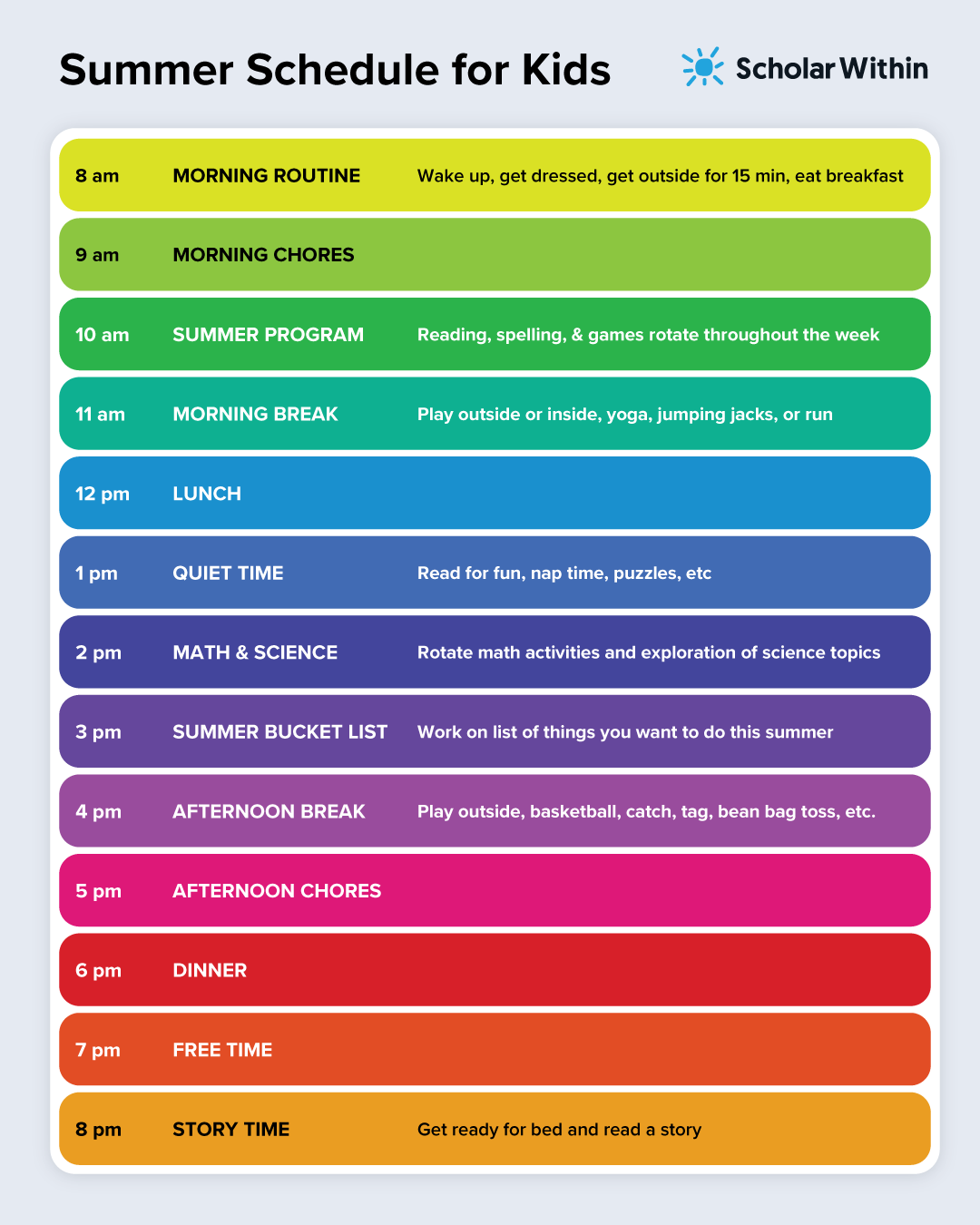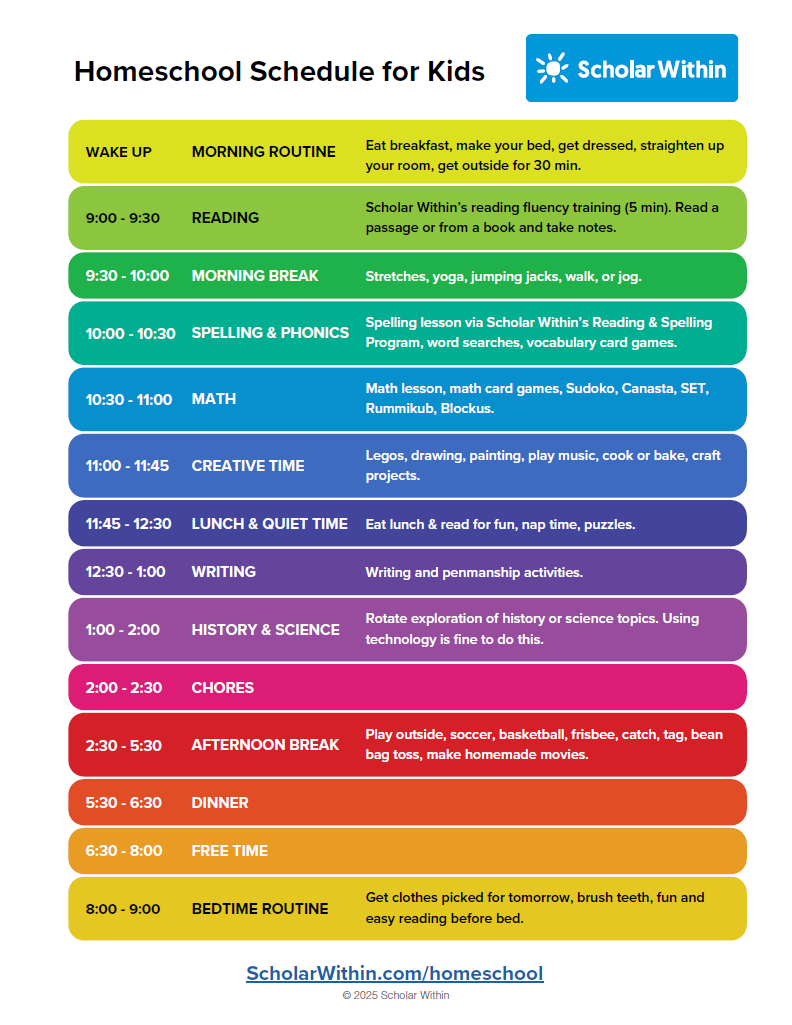How it Works Reading & Spelling Program
Table of Contents
- Overview
- Read with Tap-to-Read
- Improve Reading Comprehension
and Take Notes with Graphic Organizers - Read Faster with Fluency Training
- Learn to Spell Accurately and Confidently
- Improve Time Management and Executive Function Skills
- Play Games
Scholar Within’s Reading & Spelling Program Curriculum Overview
Scholar Within’s Reading & Spelling Program is self-paced with a mix of online and offline activities.
Most of the actual work is done offline with paper and pencil. There are worksheets, puzzles, graphic organizer note-taking forms, printable card games, brain-body activities, digital field trips, and more.
Research shows that the physical act of writing improves learning skills faster than only using screens.
Reading passages are audio-enabled and accessed online. There are also video spelling and phonics lessons.
We provide answer keys so you can review your student’s work.
For grades K-3, most of the activities are done together by a parent and child. For grades 4-8, there are 1-2 activities that a parent or older sibling can do with the student and the rest the student can do independently with periodic check-ins.
The program does take parental involvement as you figure out how to do the program, but by the second week, the program becomes second nature.
1. Read with Tap-to-Read
Have you ever come across a word for the first time that didn’t sound like you think it would be pronounced?
How about the word ‘chaos’ or seeing a term like ‘Aurora Borealis’ for the first time?
With Tap-to-Read, you can tap on a word to hear the proper pronunciation.
We encourage kids to sound out words first, but if they are still having trouble or want to double-check the word, they can tap on it to hear the proper pronunciation.
Tap-to-Read Technology
After reading a passage, your child can press play to listen and follow along.
You can even adjust the playing speed to help work on reading fluency.
Plus, you can adjust the font size and change the font.
Text-to-speech has never sounded this good before.
- Builds language skills
- Makes the written text come alive by having voice audio files that go along with it
- Listening skills improve
- Improves comprehension
Additional Program Information
2. Improve Reading Comprehension and Take Notes with Graphic Organizers

After reading the selection, your child will learn to take notes and use them later. We have custom fill-in-the-blank note-taking forms that make it easy to take notes and organize ideas.
Yes, we even teach note-taking skills with younger grades.
If your student has a hard time with writing, they can dictate their notes or record them and then copy the notes.
- Improves comprehension skills
- Builds knowledge base
- Strengthens memory skills and overall thinking skills
Reading Comprehension Questions
Most reading programs ask students questions about a reading selection immediately after they have read it.
It’s a lot easier to answer the questions when you do this.
With Scholar Within, we stretch kids’ abilities to answer questions about what they have read a day or two later.
You might be thinking this is extremely difficult, but because kids take notes on what they have read, they can review their notes, put them away, and then answer the questions on the reading selection.
The first week is often challenging, but kids start to realize that they need to pay closer attention to the reading selections and take better notes by the second week.
Kids dramatically start improving their memory and comprehension by doing this process.
Additional Program Information
3. Learn to Read Faster (Reading Fluency Training)

Just like you can train your body for sports, you can train your eyes for reading.
Reading fluency training increases the speed and accuracy of reading without compromising comprehension.
This is NOT speed reading. This is reading fluency training.
These simple drills work on training and strengthening your eye muscles to move more smoothly from left to right.
As a result, you start to read faster without skipping words or lines and avoiding repeating words.
Even adults can do this to train their eyes to read faster!
Reading fluency training:
- Takes only 5 minutes to do
- This leads to more efficient and proficient reading
- Gives practice with the automatic decoding of words
- Saves time and empowers you to accurately read faster
- Intrinsically improves comprehension
- Dramatically helps kids with dyslexia or reading challenges
- One of the most ignored reading skills in the school system
Additional Program Information
4. Become an Expert at Spelling with Phonics and Spelling Patterns

Even adults sometimes struggle with spelling.
If your kids are able to build a strong foundation of spelling now, school and work will become so much easier in the years to come.
Plus, improving your spelling skills intrinsically improves reading skills because it is the inverse of reading.
Spelling is encoding words, and reading is decoding words.
How does Scholar Within teach spelling?
Almost all words follow 8 spelling patterns.
We teach spelling by grouping words according to these patterns.
- 8 Spelling patterns
- Multi-sensory lessons with a strong auditory processing component
- Students listen to words broken up in individual sounds and learn to spell a sound at a time
- Understand how and why letters are put together the way that they are in English
- Phonemic awareness and phonics are integrated through video lessons
- Students listen to a sound at a time and identify the letters to the sounds
- Puzzles, worksheets, and games supplement spelling lessons
Additional Program Information
5. Improve Time Management & Executive Function Skills

(The planner seen above is included in the essential box for grades 2-8.)
Improving time management and executive function skills is a critical aspect of academic and personal success. These skills involve planning, prioritizing, and executing tasks efficiently.
This is the decision part of the reading. Every time you read:
- You decide what you are going to read.
- You decide when you are going to read.
- You plan your reading to fit into your day, whether it is during a break, after school, after dinner, or before bed.
While reading, whether it’s a news story, social media, an article, or a book, your brain constantly uses executive function skills by asking yourself:
- Is this important?
- Do I need to remember this?
- What associations or connections can I draw from the characters?
- Do I have any personal experiences that I can relate to what I’m reading?
Because these skills are so important, your kids will be doing specific activities to strengthen these skills:
- Working memory skills
- Flexible thinking skills
- Overall executive function skills
We have custom-designed daily planning worksheets and goal-setting worksheets to help.
Additional Program Information
6. Play Games

At Scholar Within, we love to play games. Game playing gives your kids the opportunity to practice and learn new skills in a relaxed atmosphere.
What type of games?
- Word-Attack Card Games
These games stretch your kid’s abilities to manipulate word parts and see relationships between words. - Antonym and Synonym Card Games
These games work on your kid’s vocabulary skills. - Rhyming Card Games
These games work on your kid’s phonemic awareness and phonics skills. - Brain-Body Games
These games get your kids moving and working on improving their vestibular system. When the entire brain-body connection is working better, overall learning improves.
Games make learning more engaging and enjoyable, they can reinforce concepts, improve memory, and improve strategic thinking.
Natalie M. says, “Also, the games were really enjoyable! We even played them AFTER the lesson was over for the day. We were very impressed with the variety of activities and tools available with this program.”
Are you ready to sign up?
Additional Program Information
What grade is your child?
Select a grade to learn more about each individualized homeschool reading skills program:




